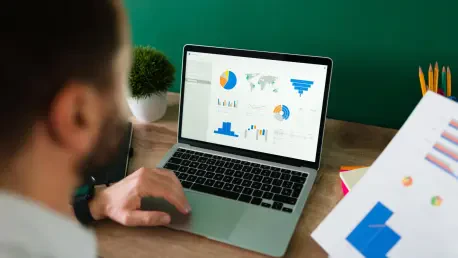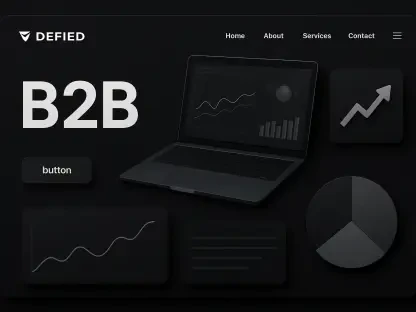As we mark 25 years of digital advertising transformation, I’m thrilled to sit down with Anastasia Braitsik, a global leader in SEO, content marketing, and data analytics. With her extensive expertise, Anastasia has witnessed firsthand the seismic shifts in how platforms like Google Ads and YouTube have redefined business outreach and consumer engagement. In this conversation, we explore the evolution of digital ads over the past quarter-century, the empowering role of AI, the cultural impact of video platforms, and the changing ways people search for information. Her insights offer a deep dive into how these tools have leveled the playing field for businesses and what the future might hold.
How has Google Ads reshaped the way businesses connect with their audiences over the past 25 years?
Over the last 25 years, Google Ads has fundamentally changed the game for businesses by making advertising more accessible and targeted. In the early days, it was about simple text ads tied to search queries, but it quickly evolved into a sophisticated platform that lets businesses reach people at the exact moment they’re looking for something. It’s shifted marketing from a one-size-fits-all approach to a personalized conversation, using data to understand intent and deliver relevant solutions. This has allowed businesses of all sizes to build connections that were unimaginable before, turning a small ad spend into a global reach.
What stands out to you as the most unexpected change in digital advertising since Google Ads launched?
I think the sheer speed and scale of personalization has been the most unexpected. When Google Ads started, it was revolutionary just to match ads to keywords. But now, with machine learning and AI, we’re seeing ads tailored not just to what you search, but to your behavior, context, and even unspoken needs. The idea that a small business can compete with a corporate giant simply by leveraging smart, data-driven ads was unthinkable back then. It’s been astonishing to see how quickly this technology has democratized advertising.
How has Google Ads created opportunities for small businesses to compete with larger corporations?
Google Ads has been a game-changer for small businesses by leveling the playing field through affordability and precision. Unlike traditional advertising, where budget often dictated reach, Google Ads allows small players to target specific audiences with minimal spend. Features like local search ads and pay-per-click models mean a family-owned shop can appear alongside major brands when someone nearby searches for their product. It’s empowered businesses to grow without needing massive marketing teams or budgets, purely by being relevant to the right people at the right time.
Can you share a memorable success story of a small business that thrived thanks to digital advertising?
Absolutely, one that comes to mind is a family-run crawfish business from Louisiana. They started over 40 years ago selling wholesale, but when they built a website in the late ‘90s and began using Google Ads in the early 2000s, their world changed. They shifted to direct-to-consumer sales, reaching people across the country who craved authentic crawfish. Digital ads helped them find new customers and retain loyal ones by targeting specific regions and interests. It’s a perfect example of how a small operation can scale nationally with the right digital tools.
In what ways is AI transforming how digital ads interpret customer needs?
AI is revolutionizing digital ads by decoding the nuances of customer intent in ways we couldn’t before. It goes beyond keywords to analyze context, search patterns, and even predict needs based on behavior. For instance, AI can tell if someone searching for “car repair” is in an emergency or just browsing for future options, then serve an ad that matches that urgency. It’s making ads feel less like interruptions and more like helpful answers, which builds trust and boosts effectiveness for businesses.
How are AI-driven tools simplifying the process of creating impactful ads for businesses?
AI tools are taking a lot of the guesswork out of ad creation. They can generate ad copy, suggest visuals, and even optimize campaigns in real time based on performance data. For a business owner who’s not a marketing expert, AI can analyze what’s working and adjust bids or targeting automatically. It’s like having a marketing assistant that never sleeps, ensuring your ads are always relevant and cost-effective, which is especially valuable for smaller businesses with limited resources.
Why is timing so crucial in digital advertising, and how does Google Ads help with that?
Timing is everything because consumer decisions often happen in fleeting moments of need or curiosity. If you miss that window, you’ve lost the opportunity to connect. Google Ads excels at this by using real-time data to place ads when someone is actively searching for a solution. Whether it’s a car buyer researching models or someone looking for a nearby restaurant, the platform ensures businesses show up exactly when they’re needed, turning intent into action.
How have search behaviors evolved over the years, and what does this mean for businesses?
Search behavior has shifted dramatically from typed, deliberate queries to natural, multimodal interactions. People now use voice search, images, or even point their phone at something to ask about it. This means Search isn’t just a tool anymore; it’s woven into daily life. For businesses, it’s an opportunity to engage at the spark of curiosity, but it also means they need to adapt by optimizing for voice, visual content, and hyper-local relevance to stay visible in these new formats.
What role has YouTube played in shaping both culture and marketing strategies over the past two decades?
YouTube has been a cultural powerhouse, becoming the place where trends are born and communities thrive. For marketing, it’s an unparalleled platform to tell stories and earn attention through video. Brands can partner with creators who already have passionate audiences or tap into real-time cultural moments to stay relevant. It’s not just about ads; it’s about building connections through content that resonates, making YouTube a key driver for brand awareness and even direct sales.
What is your forecast for the future of digital marketing in the coming years?
I believe digital marketing will become even more integrated into our everyday experiences, driven by AI and immersive technologies. We’ll see ads that feel less like ads and more like seamless, personalized interactions—think augmented reality experiences or hyper-contextual suggestions based on your environment. Privacy will remain a huge focus, pushing platforms to balance relevance with respect for user data. Overall, the future will be about creating value in every interaction, ensuring that marketing feels helpful rather than intrusive.









